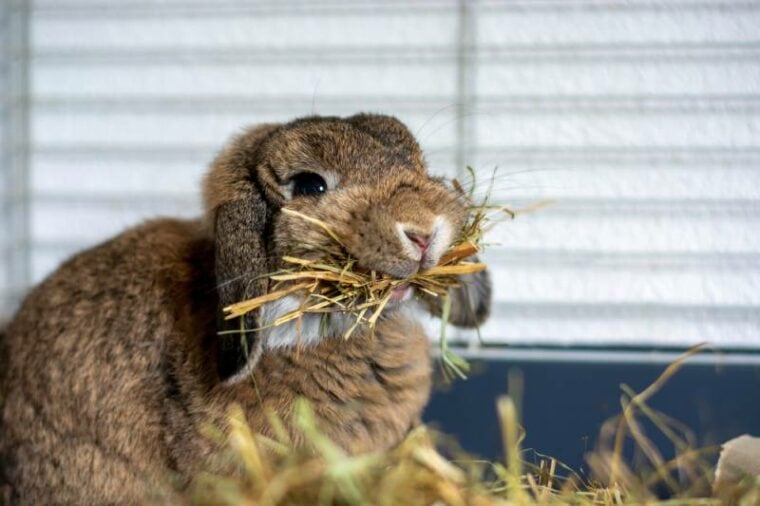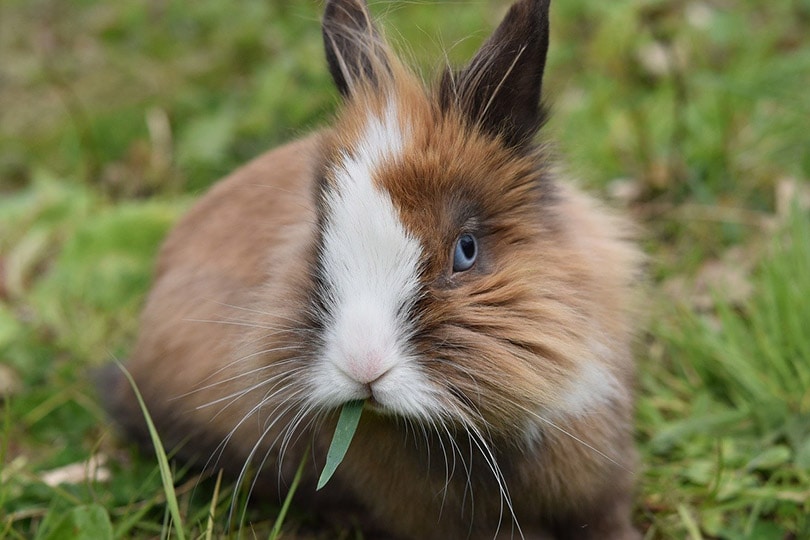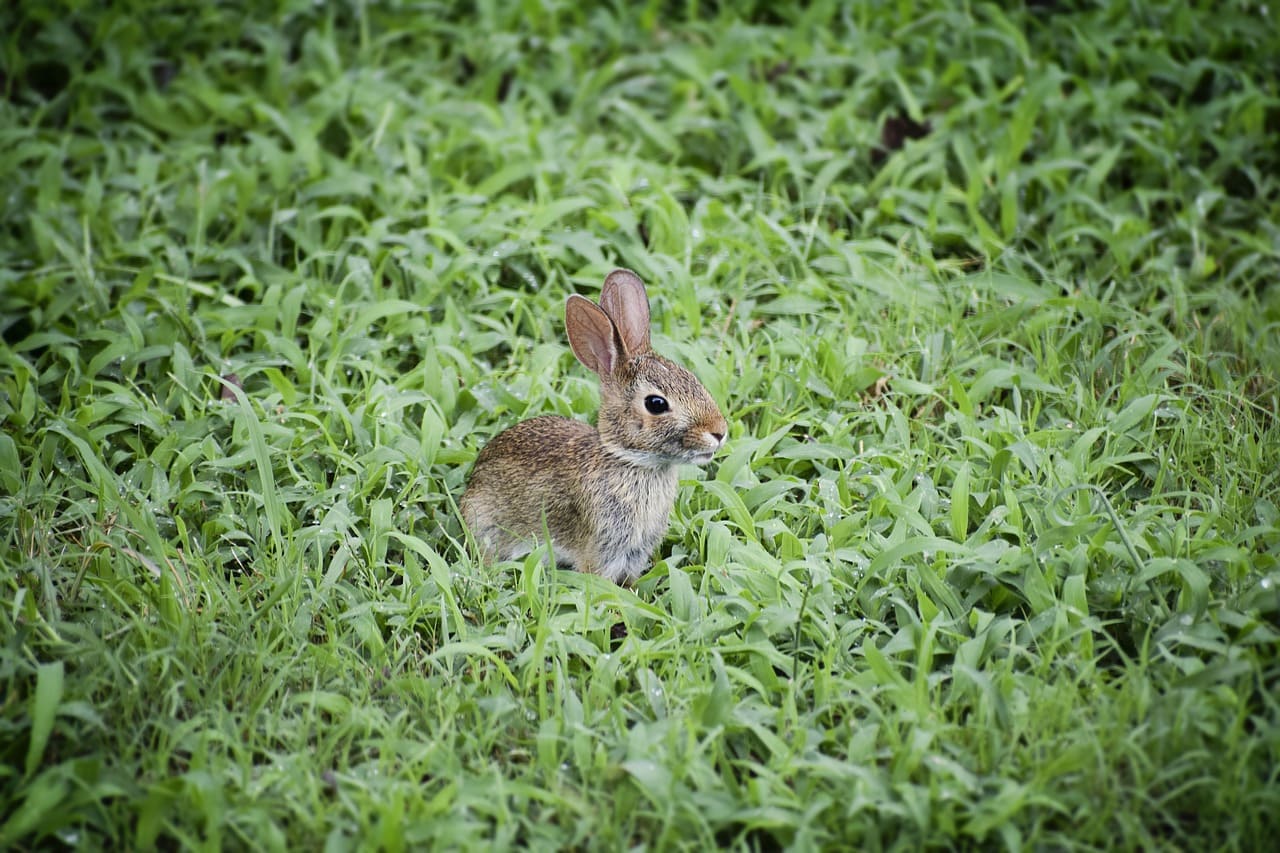
Rabbits are amazing animals with beautiful coats of fur that make us want to pick them up and cuddle them. But while pet rabbits are domesticated and most can become fairly tolerant and acceptable of snuggles, wild rabbits are a different story. Wild rabbits are always on the lookout, as they are prey species and have a lot of natural enemies.
Other than the difference in habitat, lifestyle, and social structures between wild and domesticated rabbits, all rabbits are pretty much the same. They all reproduce in the same way, they all explore and move around in the same way, and they all eat pretty much the same things.
But wild rabbits can find their own food while domesticated rabbits must rely on their owners to provide them with the foods that they need to stay healthy. Some foods rabbits eat in the wild are not available to domesticated rabbits, so some improvisation is required. And many foods that wild rabbits would rarely eat or show interest in, such as fruits and even the majority of vegetables, are often offered to pet rabbits, sometimes in excess and with detrimental effects on their health. Here is what you should know about what rabbits do eat in the wild and as pets:

Various Grasses & Hays
All rabbits are herbivores and do not eat any meat. In the wild, rabbits will eat all kinds of different types of grasses, clover, flowers, seedlings, and weeds as the bulk of their diets. They will eat whatever kinds of grasses they come across, such as meadow, timothy, orchard, or any grass that is abundant in their habitat. Wild rabbits eat tons of grass each day to meet their nutritional and fiber requirements. Some of these grasses in the form of hay can be found at the store and are specifically formulated for pet rabbits, as growing them at home can be quite a time consuming, space intrusive, and expensive quest since your domesticated rabbit would need to eat so much of it.
Luckily, there are many hay products on the market that are made of different grasses and hays which would be found in the wild. Another product used for feeding pet rabbits is commercial pellets. The grasses are broken down into shreds and then condensed together into little pellets that are easy for rabbits to chew and digest. Rabbit pellets are dense in nutrition and calories, so they do not need to eat as much of it as they would unprocessed grass in the wild. Essential nutrients are added to this type of food as well, such as vitamins and minerals.
The texture of rabbit pellets is mostly all the same, which may get boring for some domesticated rabbits, while others may prefer this to hay. This can become problematic. A pet rabbit’s diet should be based on hay, making up for 85% of their daily food intake, as fiber is crucial in maintaining adequate dental and digestive health. Pellet food, although tasty and nutritionally dense, should not make more than 5% of their daily food amount, as it may lead to digestive and dental issues and obesity.

Fruits & Vegetables
Wild rabbits will rarely eat vegetables or fruits in the wild, despite common misbelief, unless their usual food sources are very scarce. A wild rabbit’s diet is based on grass, clover, seedlings, tree bark, weeds, flowers, and more. Pet rabbits should replicate their wild diets as closely as possible, so carrots and other veggies not usually found in the wild should be offered to them sparingly.
In addition to occasional treats of carrot tops, domestic rabbits should be offered a variety of dark leafy greens and herbs, such as romaine lettuce, watercress, cilantro, parsley, cabbage, broccoli, beet greens, kale, and other vegetables daily and in moderation, at no more than 10% of their daily food intake. This is in addition to the hay they should get in unlimited amounts and the small amount of pellets.
Fruits such as berries, bananas, apples, and melons should only be offered very sparingly and as often as once or twice per week, as they may cause serious digestive issues and gut stasis, which can be life threatening and contribute to obesity.

Babies vs. Adults
In the wild, rabbits spend all their time foraging for food and will eat however much they need to fulfill their daily nutritional needs. In a household, rabbits can become picky if their bowl with pellets keeps getting filled or are offered excess fruits and veggies and eat too much because they are not nearly as active as wild rabbits are.
Young domestic rabbits should be offered an unlimited number of alfalfa hay alongside a measured out amount of appropriate commercial pellets, such as alfalfa, due to their high need for protein and calcium. However, when they reach about 7 months of age, depending on the breed, it is time to ask the veterinarian how many limited pellets and which type of pellets and hay should be offered each day to meet the dietary needs of your rabbit based on things like their activity level, health, and medical history.
The average adult rabbit will eat about ¼ to ⅛ cup per 5 pounds (2.25 kilograms) of pellets and ¼ to ½ a cup of leafy green vegetables with an unlimited amount of fresh hay daily.


Our Final Thoughts
Domesticated rabbits should eat as close to a natural diet as possible, just like they would if they were living in the wild. Most rabbit owners are tempted to give their rabbits more veggies and fruits than they actually need, but this tends to be more harmful to your rabbit and without any real nutritional benefits, as their digestive system is very sensitive, and the delicate gut bacteria will easily get disrupted by excess carbs, leading to life threatening gut stasis.
But it is possible to mimic the wild rabbit’s diet by utilizing unlimited amounts of fresh, high-quality hay as the main staple while including a recommended amount of fresh greens, commercial pellets daily, and (very rarely) some fruits. What kinds of veggies are you most excited about feeding your pet rabbit? Share your thoughts with us in our comments section!
See also:
- Can Rabbits Eat Collard Greens? Is It Healthy?
- Can Rabbits Eat Chicken? Consumption Facts & Safety Guide
Featured Image Credit: Ellyy, Shutterstock










